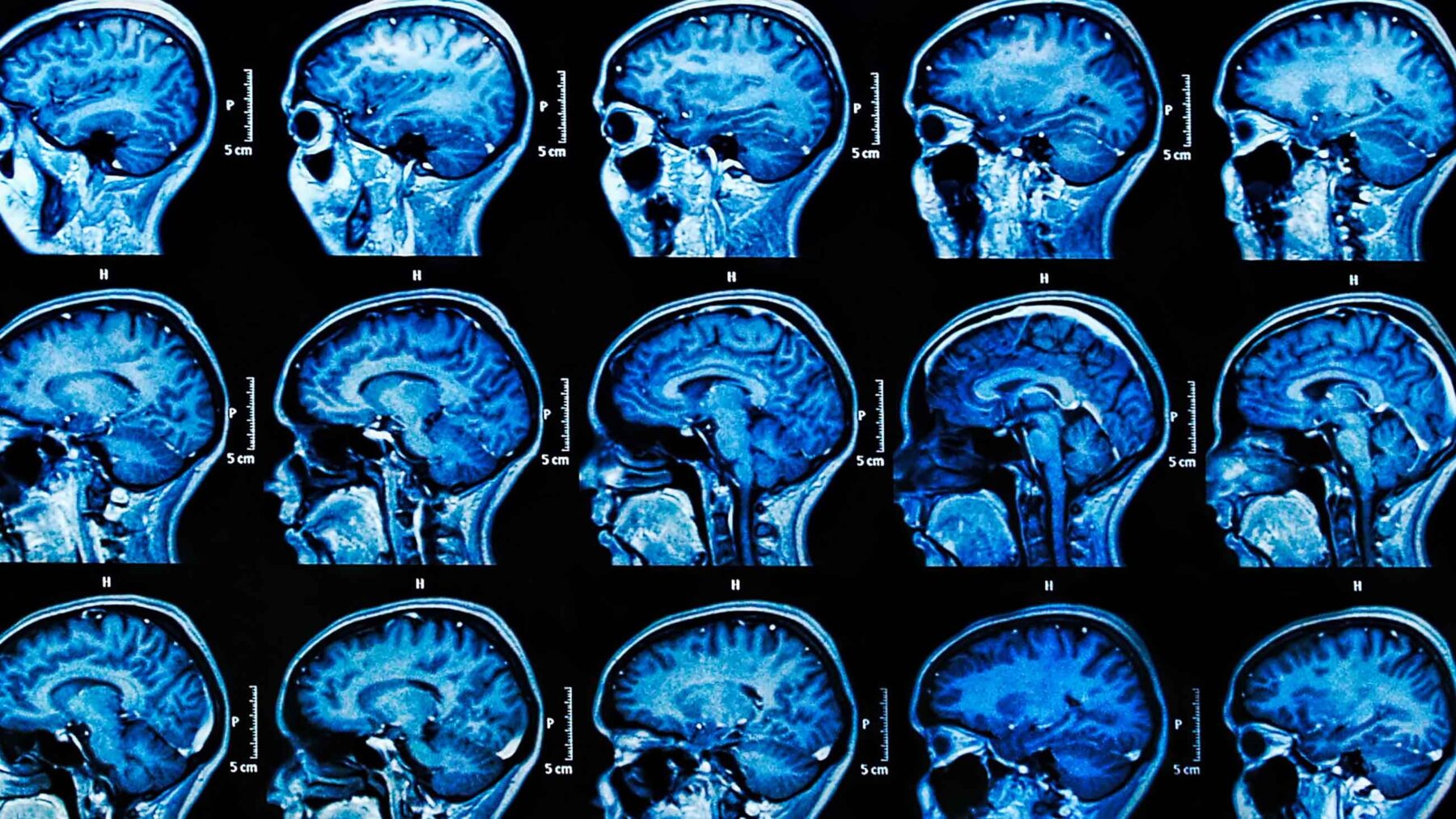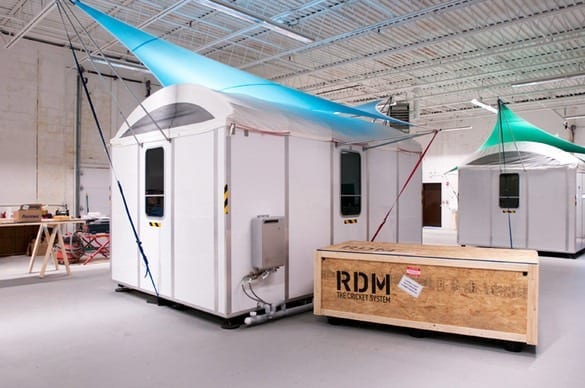
Aims for fast and affordable scans, early and quick diagnoses
A new method of magnetic resonance imaging (MRI) could routinely spot specific cancers, multiple sclerosis, heart disease and other maladies early, when they’re most treatable, researchers at Case Western Reserve University and University Hospitals (UH) Case Medical Center suggest in the journal Nature.
Each body tissue and disease has a unique fingerprint that can be used to quickly diagnose problems, the scientists say.
By using new MRI technologies to scan for different physical properties simultaneously, the team differentiated white matter from gray matter from cerebrospinal fluid in the brain in about 12 seconds, with the promise of doing this much faster in the near future.
The technology has the potential to make an MRI scan standard procedure in annual check-ups, the authors believe. A full-body scan lasting just minutes would provide far more information and ease interpretation of the data, making diagnostics cheap compared to today’s scans, they contend.
“The overall goal is to specifically identify individual tissues and diseases, to hopefully see things and quantify things before they become a problem,” said Mark Griswold, a radiology professor at Case Western Reserve School of Medicine and UH Case Medical Center. “But to try to get there, we’ve had to give up everything we knew about the MRI and start over.”
Griswold has been working on this goal with Case Western Reserve’s Vikas Gulani, MD, an assistant professor of radiology, and Nicole Seiberlich, assistant professor of biomedical engineering, for a decade. During the last three years, they developed the technology and proved the concept with graduate student Dan Ma; Kecheng Liu, PhD, collaborations manager from Siemens Medical Solutions Inc.; Jeffrey L. Sunshine, MD, professor of radiology and a radiologist at UH Case Medical Center; and Jeffrey L. Duerk, dean of Case School of Engineering and professor of biomedical engineering.
A magnetic resonance imager uses a magnetic field and pulses of radio waves to create images of the body’s tissues and structures. Magnetic resonance fingerprinting, MRF for short, can obtain much more information with each measurement than a traditional MRI.
Griswold likens the difference in technologies to a pair of choirs.
“In the traditional MRI, everyone is singing the same song and you can tell who is singing louder, who is off-pitch, who is singing softer,” he said. “But that’s about it.”
The louder, softer and off-pitch singing is represented by dark, light or bright spots in the scan that a radiologist must interpret. For example, an MRI would show swelling as a bright area in an image. But brightness doesn’t necessarily equate with severity or cause.
“With an MRF,” Griswold said, “we hope that with one step we can tell the severity and exactly what’s happening in that area.”
The fingerprint of each tissue, each disease and each material inside the body is therefore a different song. In an MRF, each member of the choir sings a different song simultaneously, Griswold said. “What it sounds like in total is a randomized mess.”
The researchers generate unique songs by simultaneously varying different parts of the input electromagnetic fields that probe the tissues. These variations make the received signal sensitive to four physical properties that vary from tissue to tissue. These differences—the different notes and lyrics of their songs—become evident when applying pattern recognition programs using the same math in facial recognition software.
The patterns are then charted. Instead of looking at relative measurements from an image, Griswold said quantitative estimates told one tissue from another. As the technology progresses, these results will determine whether tissue is healthy or diseased, how badly and by what.
The scientists believe that they will be able to interrogate a total of eight or nine physical properties which will allow them to elicit the songs from a vast array of tissues, diseases and materials.
For a patient, an MRF would seem like a quick MRI. When the scan is done, all of the patient’s songs would be compared with the songbook, which will provide doctors with a suite of diagnostic information.
“If colon cancer is ‘Happy Birthday’ and we don’t hear ‘Happy Birthday,’ the patient doesn’t have colon cancer,” Griswold said.
The Latest Bing News on:
Magnetic resonance fingerprinting
- Scientists Take New Approach in Fight Against Counterfeit Alcoholic Spiritson May 8, 2024 at 5:00 pm
Michael Bryan, PhD student at the ICBD The team have spent the last six months using lab-based analytical techniques to detect the chemical fingerprint of hundreds ... (HPLC-DAD), and nuclear magnetic ...
- Scientists' new approach in fight against counterfeit alcohol spiritson May 2, 2024 at 10:00 am
In the shadowy world of counterfeit alcoholic spirit production, where profits soar and brands are exploited, the true extent of this illegal market remains shrouded.
- How science could disrupt the gin industryon April 17, 2024 at 5:00 pm
Reporter Eve Thomas explains how breakthroughs in nuclear magnetic resonance spectroscopy could ... scan that lets scientists create a flavor “fingerprint.” The new technique could have ...
- Advanced nuclear magnetic resonance technique reveals precise structural, dynamical details in zeoliteson April 16, 2024 at 5:01 pm
Zeolites are widely used in many industries, yet their intrinsic catalytic nature is not completely understood, due to the complexity of the hydroxyl-aluminum moieties. Atomic-scale analysis of ...
- Cardiovascular Magnetic Resonance Imagingon April 16, 2024 at 5:01 pm
Because the magnetic field alters the appearance of ST segments and T-waves once the patient enters the bore of the scanner, [27] the ECG is used only to monitor the patient's rhythm (excluding ...
- NMR Basicson November 26, 2023 at 10:32 pm
Almost all samples give a NMR spectrum This facility deals with magnetic resonance, in particular nuclear magnetic resonance. It gives data from a sample that is subjected to a magnetic field and ...
- Quantum Leapon May 31, 2023 at 12:21 pm
CWRU’s breakthrough, Magnetic Resonance Fingerprinting (MRF), surpasses traditional techniques by providing quantitative information; the resulting increase in accuracy is akin to using a thermometer ...
- Characterizing and Tailoring Polymers using Nuclear Magnetic Resonanceon March 10, 2023 at 1:15 am
Nuclear magnetic resonance (NMR) is ubiquitous in chemistry and materials science. One of the reasons for its widespread popularity is because NMR is able to provide valuable information on the ...
- Computer Science Colloquiumon February 15, 2022 at 6:13 am
University of Michigan "Rapid Cardiac Magnetic Resonance Imaging: MR Fingerprinting and Physics-Based Deep Learning" April 22, 3:30-4:30 p.m. Baopu Li, Oracle Cloud "Auto Machine Learning by Neural ...
- NMR Spectrometerson August 16, 2020 at 10:19 am
NMR Spectrometers based on the Nuclear Magnetic Resonance (NMR ... raw materials fingerprinting, determining purity of the sample, quantitative analysis, identifying and confirming the compounds ...
The Latest Google Headlines on:
Magnetic resonance fingerprinting
[google_news title=”” keyword=”magnetic resonance fingerprinting” num_posts=”10″ blurb_length=”0″ show_thumb=”left”] [/vc_column_text]The Latest Bing News on:
Disease fingerprint
- Groundbreaking Study Utilizes Geology Techniques to Identify Cancer at the Atomic Levelon May 13, 2024 at 6:47 pm
As the shadow of cancer continues to cast over millions of lives globally, researchers have unearthed a compelling new approach to catch the deadly disease earlier than ever. By applying a method ...
- Researchers Discover Cancer's 'Fingerprints' Using Geological Techniqueon May 13, 2024 at 6:31 pm
Cancer is the second-greatest cause of death worldwide, accounting for more than 10 million deaths per year. Yet many cancers are curable if caught early and treated effectively. The problem is often ...
- Evolutionary algorithm generates tailored 'molecular fingerprints'on May 10, 2024 at 6:45 am
A team led by Prof Frank Glorius from the Institute of Organic Chemistry at the University of Münster has developed an evolutionary algorithm that identifies the structures in a molecule that are ...
- Unique atomic fingerprint of cancer cells discovered in hydrogen atomson May 7, 2024 at 6:53 am
Geologists and biologists use earth science tools to identify cancer's unique atomic markers known as fingerprints.
- Geologists, biologists unearth the atomic fingerprints of canceron May 6, 2024 at 12:00 pm
Scientists at the University of Colorado Boulder and Princeton University have, for the first time, employed a tool often used in geology to detect the atomic fingerprints of cancer.
- Research identifies a unique protein fingerprint linked to very short sleep and increased diabetes riskon May 1, 2024 at 6:59 pm
Study: Very short sleep duration reveals a proteomic fingerprint that is selectively associated with incident diabetes mellitus but not with incident coronary heart disease: a cohort study. Image ...
- Short and long sleep durations associated with higher diabetes incidence, study findson May 1, 2024 at 8:08 am
In the study, sleep duration emerged as a crucial factor linked to the incidence of DM and CHD. Sixteen unique proteomic markers effectively predicted variations in sleep duration and suggested ...
- Scientists to map 50 million human cells to look for disease fingerprintson May 1, 2024 at 12:27 am
The team will map genomic fingerprints of autoimmune diseases, heart diseases and cancer. The work will build on the early success of a clinical trial for Crohn’s disease.
- $27 million to map 50 million human cells and uncover genetic fingerprints of diseaseon April 29, 2024 at 5:00 pm
The Garvan Institute plans to map 50 million human cells from 10,000 people to identify unique genomic fingerprints of autoimmune diseases, heart diseases and cancer, building on the early success of ...
- Scientists identify cell vulnerability 'fingerprint' related to Parkinson's, Lewy body dementiaon April 15, 2024 at 5:00 pm
The findings reveal that brain cells with Lewy bodies exhibit a specific gene expression pattern akin to a disease-related fingerprint. A new study from Van Andel Institute scientists offers a ...
The Latest Google Headlines on:
Disease fingerprint
[google_news title=”” keyword=”disease fingerprint” num_posts=”10″ blurb_length=”0″ show_thumb=”left”]











